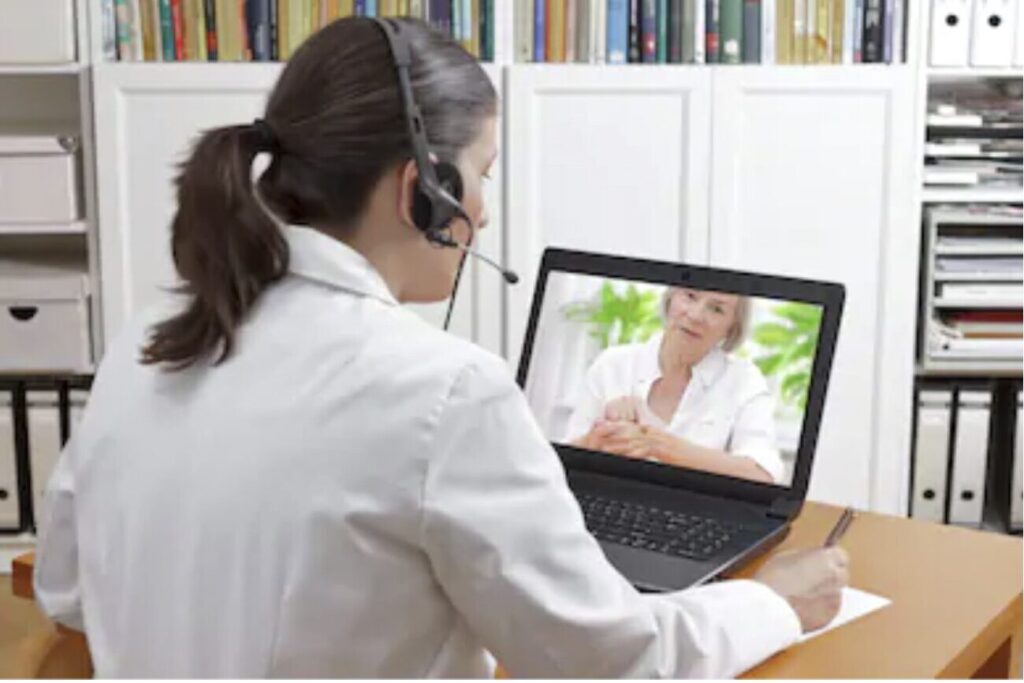The COVID-19 pandemic has brought unprecedented changes in how patients can receive medical care and access their physicians. Although telemedicine has been around for several years, use has been limited, mostly due to restrictions in insurance coverage, location where telemedicine could be performed and the need for ‘HIPAA compliant’ platforms. However, beginning in March, both the Centers for Medicare and Medicaid Services (CMS) and the Department of Health and Human Services (HHS) introduced sweeping changes to telemedicine in order to provide medical care to patients while limiting potential exposure to COVID-19. These efforts have been critically important for people at high risk including those who are elderly, immune compromised, pregnant or have severe pulmonary or cardiac issues.

Never in my medical career have I seen such a dramatic change in healthcare delivery and with such speed! There were some key changes in regulation that allowed this to happen: 1) patients were allowed to ‘connect’ from home instead of being required to drive to an outpatient office, 2) a variety of video platforms were allowed including many that are relatively easy to download and 3) changes in insurance reimbursement allowed medical offices to get paid for these visits, similar to an in person visit.

By now, most Americans have either experienced a telemedicine visit themselves or have known friends or family members who have had telemedicine visits. From what I hear, most experiences have been very positive: “I love that I didn’t have to leave my home”, “It saved me a one hour drive”, “My family was able to be there and provide important information”, and “I didn’t have to put on make-up!”. From the perspective of the physicians, there are advantages as well. At a time when most outpatient offices were closed and people were encouraged to stay home, telemedicine allowed physicians to continue working and seeing patients while reducing their own risk of exposure to infection.
There have been some drawbacks and limitations however. From the patient perspective, some people are not comfortable with a video or phone visit and may not have access to reliable internet or a smart phone/laptop, particularly in rural areas. Even with reliable network connections, there can be glitches resulting in loss of video or sound, in large part because so many different ‘apps’ have been rolled out so quickly with little time for training, set up and testing. And most importantly, from the medical perspective, there are many things that can’t be done over a video connection including procedures, lab tests and some aspects of the physical exam.
So how do you and your neurologist decide whether your next appointment should be in person or via video or phone? There are a lot of important factor.
When to Consider an Appointment in Person at the Office:
- First time visits – When you are meeting a new neurologist, the appointment will likely be more in depth and include a complete neurological examination which is difficult to do on a video visit. You may also be bringing prior medical records to review that may not have been previously uploaded to your electronic medical record. And although safety must always be considered first, having a face to face interaction can be important for developing trust.
- Procedures – Common procedures in the neurology office include EEGs, EMGs and Botox injections. If one of these procedures have been recommended, ask your doctor how urgent it is and if it can be postponed or combined with an in person visit to limit the number of trips to the office.
- Lab Tests – Some lab tests like anti-seizure drug levels can be critically important, especially during pregnancy. Ask your doctor about the urgency of lab tests and whether they can be combined with an office visit (including a visit to your OB or PCP). If you need to go to separate lab to have tests drawn, consider calling the lab to find out what days and times are usually least crowded.
Preparing for An In Office Visit:
- Take a mask or face covering with you to wear during the entire appointment from the time you walk in the door to the time you walk out. Almost all offices are requiring this. If you do not have a mask, the office will usually supply you with one (but call ahead and confirm).
- Be prepared to have your temperature taken and complete a “symptoms” check list. If you have COVID symptoms (fever, cough, shortness of breath, fatigue, body aches, loss of taste or smell, vomiting or diarrhea), then you need to call the office and will likely have to reschedule the appointment or have a video visit.
- Family members may not be allowed to come back to the exam room with you and may be asked to wait in the car during the appointment. If your family member has a cell phone, ask if you can call them during the appointment so that they can participate via phone.
When to Consider Telemedicine: Video or Telephone Visit
- Routine follow-up visits – Many routine follow-up visits can be done via telemedicine. If the office staff doesn’t offer this when scheduling your appointment, ask if it is an option for you
- High risk patients – Adults over age 65, people with chronic lung disease or asthma, serious heart conditions, severe liver or kidney disease, diabetes, obesity, pregnancy or immunocompromised (cancer, HIV, bone marrow transplant, taking immune suppressing medications) are at risk of serious complications of COVID infection. If you have any of these conditions, you should ask your doctor about a telemedicine visit.
- Transportation issues – One of the hardest obstacles people with epilepsy face is the inability to drive. Telemedicine has dramatically improved access to care without needing to rely on family members or public transportation.
How to Prepare for a Telemedicine Visit:
- If your visit will be done via video, then you’ll need to make sure you have adequate broad band access through either a laptop or smart phone. Ask the office in advance about how you will be connecting with your doctor and if you will need to download specific software in advance. If possible, ask the office staff if you can do a “test run” prior to the appointment.
- If you don’t have internet or cellular access, ask if a telephone consult is a possibility.
- Make sure you have a quiet space for the appointment where you won’t be disturbed. If you want to have family members participate in the visit, make sure they are able to see the screen and hear the audio.
- Have all of your medication bottles nearby including name and contact information for your pharmacy in case you need refills.
Above all, if you have questions or concerns about your next visit, call the office, we want to hear from you!! It is more important now more than ever that people with epilepsy have access to their medical providers. Many folks are suffering with fear and anxiety due to COVID that can worsen seizures and your medical team wants to help you. Most of all, don’t let those fears and anxieties keep you from getting the care you need. Whether it’s a visit to the office, a video consult or telephone call, it’s important to continue to get regular follow-up.
Meet the Author

Suzette M. LaRoche, MD, is Director of the Epilepsy Center at Mission Health in Asheville, NC. She is the former Director of Clinical Neurophysiology at Emory University Hospital, where she developed the ICU EEG monitoring program, one of the first comprehensive critical care EEG monitoring programs in the country. In addition, she headed the development of a multicenter, ICU EEG database for studying the clinical impact of electrographic seizures in critically ill patients and authored one of the first texts to provide comprehensive information on the practice of EEG monitoring in critically ill patients titled, “Handbook of ICU EEG Monitoring” which is now in its second edition. She is currently the vice president of the American Clinical Neurophysiology Society and has also served ACNS as a longstanding Council member as well as Chair of the Critical Care EEG Monitoring Research Consortium. Dr. LaRoche also served as an inaugural member of the ABRET Long Term Monitoring Board and is the current secretary of ABCN. More recently, Dr. LaRoche has been focusing her career efforts on improving healthcare delivery to patients with seizures and epilepsy in rural areas which includes development of tele-EEG resources.


